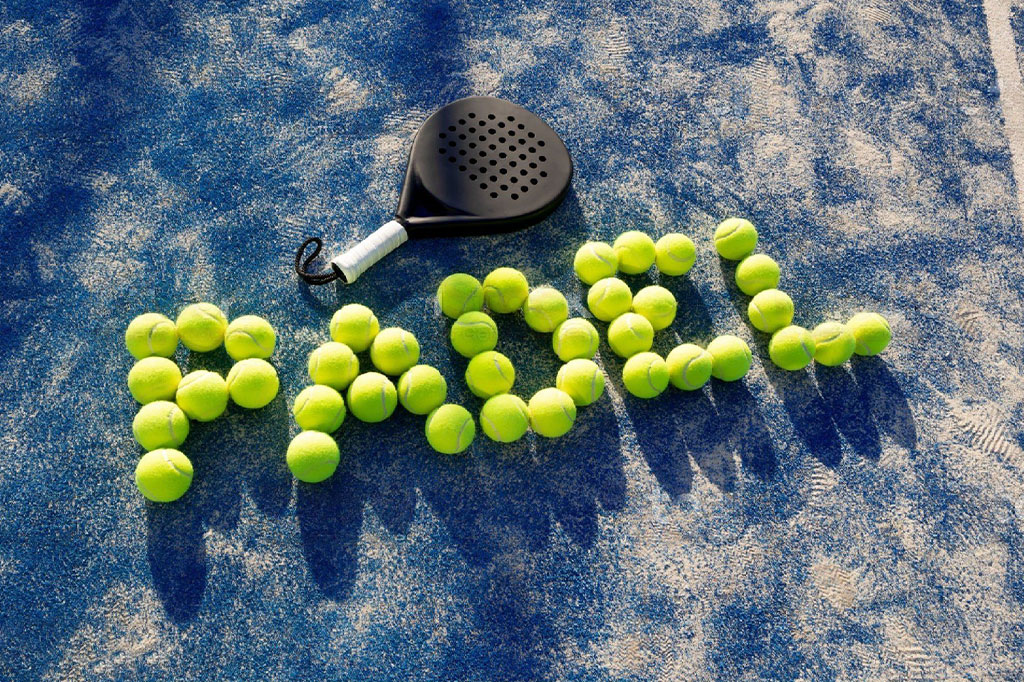Planning Construction of Padel Court
The most common floor covering for padel courts, which is also used in national and international tournaments, is artificial turf. However, the FIP does not categorically rule out the use of other types of flooring, as can be seen from the association’s requirements: “The surface of the playing field should be made of porous concrete or cement, synthetic material or artificial turf, provided that it allows the ball to bounce off evenly and prevents the accumulation of water.”
The nature of the artificial turf systems used in padel resembles neither the systems from field hockey nor those from football: They are filled with sand, the visible fiber length is 2 to 3 mm. Plastic granules are not used for backfilling. The system should have a shock absorption of more than 20%, a friction resistance between 0.4 and 0.8 and a ball bounce behavior of more than 80%. The latter criterion applies equally to all floor coverings. In order to meet the specific requirements of padel artificial turf, various European manufacturers have developed their own products in recent years that are specially tailored to padel sports.
Numerous tennis clubs, tennis hall operators and municipalities are faced with the question of whether they want to buy a padel court and thus expand the range of sports for their members and users. Padel Tennis is a fast-paced, intense racquetball game played by 4 players on a padel court surrounded by Plexiglas or lattice fencing. In large parts of the world, especially in the Mediterranean and South American areas, padel tennis is a widespread trend sport that has now also gained a foothold in Europe. More and more tennis clubs are planning to build their own courts to expand their range and attract new members.
- Building a padel court for tennis clubs has the following advantages:
- Economic land use
- Expansion of target groups for tennis clubs
- Low risk, as the investment is manageable
The area used for the padel court is relatively small and is used more because there are more players per m² than in tennis for example. So it makes sense to convert an underutilized tennis court into several padel tennis courts to increase the utilization of the sports facility. The club can also build a padel court on unused areas that would be too small for a tennis court. In this way, the profitability of the sports facility can be increased overall.
In addition, the increase in the range of sports is an advantage if new members are to be recruited and/or any dropouts are to be reintroduced to club sports. A trend sport like padel tennis is interesting for athletes who want to try something new and form close communities over time. In many cases, they are active people who previously had little or no contact with club sports or who have stopped playing tennis. A padel court on the club’s sports facility gives this new community a platform with close ties and integration into club life. Last but not least, the investment in a padel tennis court is relatively low-risk, since the construction and, above all, the maintenance and care cause manageable costs. The purchase of a padel court can be financed in part by applying for funds from sports facility funding programs. According to padel court operators, the construction of a padel court pays for itself after 5-8 years with average utilization.
Padel Court: The equipment of the sports facility
A padel tennis court is a 20x10m playing field, which is directly surrounded by 3-4m high walls. As with squash, for example, these are actively involved in the game, resulting in a more varied gaming experience. However, there are some differences in padel courts from design to design that you should pay attention to when building. The planning of the padel court – from the construction to the application of the facility can be roughly summarized in 7 steps to the padel court.
In the first step, prices should be compared and the relevant providers of padel courts should be contacted, who will support the club in planning and applying for the building application. There are massive differences between the individual federal states and municipalities in terms of the length of time it takes to process such applications, so it makes sense to find out about the chronological order in advance.
In a further step, the foundation for the padel court must be created, because even the highest quality padel court equipment collapses if the foundation does not provide the appropriate stability. Experienced padel court builders provide the construction company with the exact foundation plan and accompany the construction of the padel court during the individual construction phases. Finally, the advertising drum should be beaten and the padel court should be activated to draw the target group’s attention to the new sports facility. Since padel tennis is a relatively new sport, many people may not even know about it. With a good advertising strategy, a broad audience can be addressed and, at best, subsequently won over as new members of the association.
At Reform Spor we have many years of experience in laying artificial turf for various applications. Therefore we know exactly what type of underlay to use at each site for the right result. For example, if you want an additional safe surface or plan to install play equipment on the pitch, we can install additional fall protection. To complete the playing field, we at Reform Spor can immediately apply the right lines for you. For this we use white artificial turf, which we integrate into the playing field according to a careful laying plan. Choose the right lines for a football or hockey field or have lines made for a multifunctional sports field. It is even possible to color the playing field in different colors. For larger sports fields we can use a cutting effect in the lawn.

